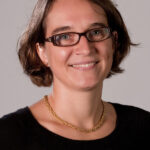As part of a joint research effort with the University of Michigan, scientists from the Jupiter campus of The Scripps Research Institute have for the first time defined the structure of one of the cell’s most basic engines, which is required for cell growth, as it assembles from its components.
The study reveals a series of redundant mechanisms that assure production of these critical structures while avoiding any missteps that could lead to their destruction or to the production of incorrect cellular building blocks. These findings throw new light on a process that is integrally involved in a number of disease states, including cancer and Alzheimer’s disease.
The study, published on August 11, 2011, in Science, reveals the structure of an assembly intermediate of the small ribosomal subunit.
Ribosomes, which are large macromolecular machines required for cell growth in all organisms, catalyze the production of proteins in all cells. They read the genetic code carried by messenger RNA, and then catalyze or translate that code into proteins within cells, assembling them from amino acids.
Understanding the process of ribosome assembly—which involves almost 200 essential proteins known as "assembly factors" in addition to the four RNA molecules and 78 ribosomal proteins that are part of the mature ribosome—is a potentially fruitful area of research because of the importance of ribosome assembly for cell growth. The link between defects in ribosome assembly and cancer clearly points to this pathway as a new target for anti-cancer drugs.
In the current study, the scientists used cryo-electron microscopy (where samples are studied at temperatures of –150 °C) to image the 40S ribosome structure.
"This is the best-defined ribosomal assembly intermediate we have ever had with true structural information on the location of each assembly factor," said Katrin Karbstein, an associate professor at Scripps Florida and one of the senior authors of the study. "It will be helpful in determining what’s going on in what is still a relatively unknown process."
While most ribosome assembly takes place in the nucleolus, a protein-nucleic acid structure inside the nucleus, the final maturation process occurs in the cytoplasm, the “general” cellular compartment where protein translation occurs. In the cytoplasm, these pre-mature ribosomal subunits encounter large pools of mature subunits, messenger RNA, and various translation factors.
This cellular stew presents a unique challenge, especially keeping the translation process from acting on the subunits prematurely, which would result in their rapid degradation or in the production of incorrectly assembled proteins, both processes with potentially lethal outcomes for the cell.
The new study shows that the bound assembly factors cooperate with one another in a highly redundant and multi-pronged approach to prevent such occurrences, chaperoning the pre-40S subunits to keep them from falling victim to the translational apparatus.
“We had thought the role of assembly factors was to help mature this intermediate form of the ribosome,” said Karbstein. “But our new research has shown that these assembly factors also prevent a number of unwanted things from happening. If one of these intermediate forms were to bind prematurely to a messenger RNA, there could be no protein produced, or worse, a wrong protein might be produced and that could lead to early cell death.”
It’s important to note that this is a single snapshot of the late-stage assembly process, Karbstein added. “We know better how the process works but this is by no means a final statement,” she said.
The first authors of the study, "Ribosome Assembly Factors Prevent Premature Translation Initiation by 40S Assembly Intermediates," are Bethany S. Strunk of Scripps Research, and Cherisse R. Loucks and Min Su of The University of Michigan. Other authors include Harish Vashisth, Shanshan Cheng, Justin Schilling, Charles L. Brooks III, and Georgios Skiniotis of The University of Michigan. For more information, visit sciencemag.org.
The study was supported by the National Institutes of Health and the National Science Foundation.
100 Things (1)
Around North County (22)
Community (10)
Events (61)
Health (24)
People (54)
Real Estate (16)
Recent News (2)
Science (24)
